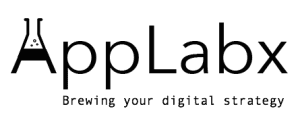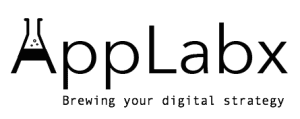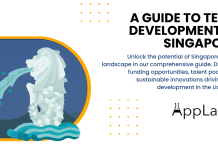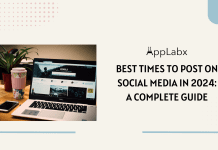Key Takeaways
- Google’s AI Overviews and zero-click searches demand content tailored for visibility, authority, and structured data optimization.
- Mobile-first indexing and voice search trends highlight the need for hyper-local SEO and conversational content strategies.
- Technical SEO, especially Core Web Vitals (LCP, INP, CLS), remains essential for user experience, rankings, and conversion performance.
In 2025, the search engine optimization (SEO) landscape in Spain stands at a pivotal crossroads, shaped by rapid technological advancements, evolving user behavior, and intensified competition across digital platforms. The influence of artificial intelligence, particularly the integration of Google’s AI Overviews and other generative technologies, has reshaped the very foundation of how users discover content and how businesses are ranked. Spain, as one of Europe’s most vibrant digital economies, is witnessing a transformation in SEO practices that demand adaptability, precision, and strategic foresight.

With Google maintaining a dominant market share—accounting for 94.81% of all search engine traffic and a staggering 98.64% on mobile—it is evident that SEO strategies in Spain must align closely with Google’s evolving algorithmic priorities. The March 2025 rollout of Google’s AI Overviews in Spain marks a definitive shift toward zero-click search behavior, reducing organic click-through rates by as much as 67.8% in affected results. This development has challenged SEO professionals to look beyond traditional metrics and focus on AI-readiness, structured data, semantic optimization, and authoritative brand positioning.
The role of E-E-A-T (Experience, Expertise, Authoritativeness, and Trustworthiness) is more critical than ever. In the face of AI-generated content flooding the digital space, Google’s algorithm now places significant weight on demonstrably human-created and credible information. Spanish websites that exhibit strong E-E-A-T signals—through expert-driven content, visible author credentials, and trustworthy site architecture—have seen measurable improvements in visibility and engagement. Notably, privacy-compliant websites with high E-E-A-T scores now benefit from an average of 19% longer session durations and higher user retention rates.
Moreover, Spain’s digital consumer base is increasingly mobile-first. With 65.73% of internet access happening via mobile devices, the urgency for fully responsive, fast-loading, and mobile-optimized websites has reached its peak. Technical SEO, especially Core Web Vitals (LCP, INP, CLS), plays a crucial role in determining not only user experience but also search ranking potential. Websites that load within 1 second have been shown to convert up to 3x better than slower counterparts—demonstrating the direct link between performance and profitability in 2025.
Another major SEO shift in Spain is the meteoric rise of voice search and hyper-local intent. Approximately 76% of all voice search queries are local in nature, emphasizing the growing importance of conversational content, long-tail keyword strategies, and accurate Google Business Profile management. For businesses in competitive markets such as Madrid, Barcelona, and Valencia, mastering localized SEO tactics has become essential to stay discoverable and relevant.
From an economic perspective, Spain’s forecasted GDP growth of 2.6% in 2025 and the resurgence of its tourism sector—representing 33% of all Southern European travel demand—present robust opportunities for digital marketers. Meanwhile, the expansion of the recommerce economy, projected to reach US$3.01 billion in market value by the end of 2025, signals a broadening digital commerce landscape where SEO serves as a key driver of visibility, traffic, and conversion.
This comprehensive blog explores the state of SEO in Spain in 2025 through the lens of current data, technical benchmarks, and evolving trends. It delves into the strategies that businesses must adopt to remain competitive in an AI-driven, mobile-dominated, and locally oriented search environment. From content credibility and structured data to voice optimization and GDPR compliance, every element of modern SEO is interconnected in shaping Spain’s digital destiny.
By the end of this article, readers will gain a full understanding of how the Spanish SEO ecosystem is evolving, the key challenges and opportunities ahead, and the actionable insights required to future-proof their online presence in an increasingly intelligent search environment.
The State of SEO in Spain in 2025: Navigating a Dynamic Digital Landscape
- Executive Summary
- Internet Penetration and Device Usage (Mobile vs. Desktop)
- Search Engine Market Share Dominance in Spain
- Economic Context and Consumer Spending Trends
- Evolving Search Behavior: Conversational and Local Queries
- Google’s AI Overviews (AIO) in Spain: Rollout and Immediate Effects
- The Ascendance of E-E-A-T (Experience, Expertise, Authoritativeness, Trustworthiness)
- AI-Generated Content: Challenges and Opportunities for SEO
- Voice Search Optimization in an AI-Driven Era
- Technical SEO and User Experience Imperatives
- Recommendations
1. Executive Summary
In 2025, the SEO ecosystem in Spain has matured into a complex, AI-driven and mobile-first digital environment shaped by rapid technological evolution, changing user intent, and macroeconomic stability. This in-depth analysis explores the key dynamics reshaping the Spanish SEO market across multiple dimensions—from search engine dominance to algorithmic shifts, user behavior, economic indicators, and competitive agency trends.
1. Search Engine Landscape: Google’s Continued Dominance
- Market Share Overview:
- Google remains the undisputed leader in Spain’s search ecosystem:
- 94.81% total search market share.
- 98.64% share on mobile platforms.
- Google remains the undisputed leader in Spain’s search ecosystem:
- SEO Implication:
- Spanish SEO strategies must be Google-centric, tailoring optimization efforts to align with Google’s core updates, AI features, and technical performance expectations.
| Search Engine | Total Market Share | Mobile Market Share |
|---|---|---|
| 94.81% | 98.64% | |
| Bing | 3.14% | 0.78% |
| Yahoo | 0.82% | 0.33% |
| Others | 1.23% | 0.25% |
2. The Rise of AI Overviews (AIO) and Zero-Click SERPs
- Introduction of AIO in Spain:
- Launched officially on March 26, 2025.
- Integrated into both desktop and mobile search queries.
- Impact on Organic Performance:
- 67.8% drop in Click-Through Rate (CTR) when AIO is active.
- Increased prominence of zero-click search behavior.
- Shift toward SERP-centric visibility rather than traditional link ranking.
- Strategic SEO Response:
- Enhanced focus on E-E-A-T (Experience, Expertise, Authoritativeness, Trust).
- Develop rich, structured content designed for direct SERP features.
- Prioritize human-first narratives backed by authoritative data and verified sources.
3. User Behavior and Platform Dynamics
Mobile-First and Voice Search Growth
- Mobile Usage Insights:
- 65.73% of digital searches conducted via mobile.
- Mobile UX and site speed are now critical conversion factors.
- Voice Search Adoption:
- 20.5% of global users actively use voice search.
- 76% of voice queries have local intent.
- Implications:
- Implement conversational keyword strategies.
- Optimize for Google Business Profiles and local schema markup.
- Build content around FAQ-style queries with succinct, natural answers.
| User Behavior Metric | 2025 Spain |
|---|---|
| Mobile Search Share | 65.73% |
| Voice Search Adoption | 20.5% |
| Voice Queries (Local) | 76% |
Technical SEO & Performance Standards
- Core Web Vitals Priorities:
- LCP (Largest Contentful Paint): Target <2.5 seconds.
- INP (Interaction to Next Paint): Maintain responsiveness.
- CLS (Cumulative Layout Shift): Minimize instability.
- Conversion Benchmarks:
- Sites loading in 1 second convert 3x better than 5-second sites.
- Speed and interactivity now serve both as ranking signals and UX necessities.
| Core Metric | Ideal Value | Ranking Impact |
|---|---|---|
| LCP | <2.5s | High |
| INP | <200ms | Medium |
| CLS | <0.1 | High |
4. Economic Outlook & Digital Market Growth
Macroeconomic Indicators (Spain, 2025)
- Real GDP Growth: 2.6%
- Unemployment Rate: 10.4% (declining)
- Inflation Rate: 2.3% (moderating)
Digital Market Opportunities
- Tourism Recovery:
- Spain attracts 33% of Southern Europe’s travel demand in H1 2025.
- Strong SEO opportunity for travel and hospitality sectors.
- Recommerce Market Surge:
- Projected to reach US$3.01 billion in 2025.
- SEO growth in sustainable consumer goods and circular economy platforms.
5. Competitive SEO Market in Spain
Global & Local Market Valuations
- Global SEO Services Market (2025):
- Valued at US$106.9 billion
- CAGR: 18.3%
- Spain SEO Agency Pricing:
- Monthly Retainers: €800–€2,000
- Project-Based: Varies with scope and specialization (AI, technical SEO, local SEO).
Primary SEO Challenges Identified in 2024
- AI Integration
- Real-time Algorithm Adaptation
- E-E-A-T Implementation
- Content Saturation
| SEO Market Metric | Value (2025) |
|---|---|
| Global SEO Market Value | $106.9 billion |
| Spanish Agency Retainer Fee | €800–€2,000/month |
| Annual Market Growth Rate | 18.3% CAGR |
| Top Challenge for SEOs | AI integration |
6. 2025 Strategic SEO Imperatives in Spain
- Prioritize E-E-A-T: Build trust and credibility through transparent authorship, citations, and experience-based content.
- Adapt for AI Search: Optimize for AIO and feature snippets with structured markup.
- Voice & Local SEO: Leverage conversational queries and location-based targeting.
- Core Web Vitals Mastery: Speed, stability, and responsiveness are critical.
- Data-Driven Campaigns: Integrate analytics for ongoing content and keyword refinement.
- Agile SEO Frameworks: React swiftly to algorithm changes and consumer behavior trends.
Conclusion
Spain’s SEO environment in 2025 reflects a paradigm shift from traditional link-centric strategies to AI-powered, mobile-dominated, and user-intent-optimized frameworks. Agencies and businesses that emphasize credibility, technical excellence, and voice/local adaptability are best positioned to thrive. As economic optimism continues and digital sectors expand, SEO in Spain offers vast potential for those ready to innovate and evolve alongside the search landscape.
2. Internet Penetration and Device Usage (Mobile vs. Desktop)
As Spain continues its digital transformation journey in 2025, the convergence of near-universal internet access, a highly mobile-first society, and rising connection speeds has set a new benchmark for SEO performance and user expectations. The nation’s digital maturity demands a strategic shift toward sophisticated, mobile-optimized, and speed-enhanced SEO strategies to remain competitive.
1. National Internet Penetration and Market Digitalization
- Widespread Connectivity:
- As of January 2025, Spain boasts 46.2 million internet users.
- This represents a 96.4% internet penetration rate, among the highest globally.
- Reflects a saturated and mature digital environment, where online competition is fierce and incremental visibility gains require refined SEO execution.
- Strategic Implications:
- Standard SEO efforts are no longer sufficient.
- Businesses must focus on differentiated strategies such as:
- AI-augmented content creation.
- Deep semantic keyword mapping.
- Advanced technical SEO practices.
| Indicator | Value (Jan 2025) | Trend |
|---|---|---|
| Internet Users | 46.2 million | Steady increase |
| Population Internet Penetration | 96.4% | Near-total saturation |
| Digital Market Maturity | High | Advanced stage |
2. Mobile Connectivity: Multi-Device Environment
- Cellular Saturation:
- Spain recorded 56.1 million mobile connections by early 2025.
- This figure equals 117% of the total population, highlighting:
- Widespread use of multiple devices per user.
- Deep integration of mobile in both personal and professional spheres.
- Mobile Market Dominance:
- As of June 2025:
- Mobile devices command 65.73% of the platform market share.
- Desktop usage has declined to 34.27%.
- Mobile dominance amplifies the impact of Google’s mobile-first indexing on SERP rankings in Spain.
- As of June 2025:
- SEO Mandate for Mobile:
- Prioritize:
- Responsive design
- Touch-optimized interfaces
- Mobile speed optimizations
- Local and voice search enhancements
- Prioritize:
| Device Platform | Share (June 2025) | SEO Impact |
|---|---|---|
| Mobile | 65.73% | Highest priority |
| Desktop | 34.27% | Secondary consideration |
3. Connection Speeds and UX Expectations
Mobile Internet Speeds
- Speed Growth Trajectory:
- Median mobile download speed rose by +31.2%, reaching 12.95 Mbps (YoY).
- Reflects Spain’s commitment to enhancing mobile infrastructure.
- User Behavior Shift:
- Faster connections encourage:
- Instant content consumption.
- Low tolerance for delays.
- Increased engagement with rich media (e.g., video, interactive elements).
- Faster connections encourage:
Fixed Broadband Speeds
- Broadband Enhancements:
- Fixed connection speeds improved by 28.33 Mbps (+14.1%).
- Though desktop usage is declining, fast broadband:
- Supports business use cases.
- Facilitates high-performance development and analytics platforms.
| Connection Type | Median Speed (2025) | YoY Growth (%) |
|---|---|---|
| Mobile Download | 12.95 Mbps | +31.2% |
| Fixed Broadband | 28.33 Mbps | +14.1% |
4. SEO Performance Risks of Non-Optimization
- High-Speed Expectations:
- Users expect near-instantaneous page loads.
- Sites that load in under 2.5 seconds outperform slower competitors significantly in:
- Bounce rate
- Conversion rate
- Time-on-site
- Consequences of Neglect:
- Websites not optimized for mobile speed and usability may face:
- Elevated bounce rates
- Lower dwell time
- Reduced visibility in mobile SERPs
- Penalties from Core Web Vitals benchmarks
- Websites not optimized for mobile speed and usability may face:
UX Performance Matrix
| Factor | Optimized Experience | Poor Experience Impact |
|---|---|---|
| Page Load Time (<2.5s) | Higher conversions | High bounce, lower ranking |
| Mobile Responsiveness | Better engagement | Lower time-on-page |
| Navigation Simplicity | Higher usability | User frustration |
| Image Optimization | Faster loading | Slow rendering |
Conclusion: SEO in a Hyper-Connected, Mobile-Centric Spain
The digital landscape in Spain in 2025 is marked by a deeply connected populace, mobile-first behavior, and a technologically advanced internet infrastructure. For businesses and SEO professionals operating in this space, the stakes are higher than ever. Merely being online is no longer a differentiator—mobile speed, responsive design, Core Web Vitals compliance, and advanced mobile-first strategies are the pillars of successful digital visibility. In this hyper-competitive environment, only those who adapt to the fast-evolving technical and behavioral ecosystem will thrive.
3. Search Engine Market Share Dominance in Spain
Spain’s digital search ecosystem in 2025 continues to be defined by an overwhelming concentration of user activity on a single platform: Google. The platform’s unrivaled dominance not only dictates the strategic direction of SEO in Spain but also amplifies the impact of every algorithmic shift or SERP innovation initiated by Google. This concentration of search behavior necessitates a laser-focused SEO framework that is highly attuned to Google’s evolving ecosystem.
1. Google’s Market Supremacy in Spain’s Search Engine Landscape
- Total Market Dominance:
- As of June 2025, Google controls 94.81% of the overall search market in Spain.
- On mobile devices, this dominance is even more pronounced, with a staggering 98.64% market share.
- Strategic Implication:
- SEO strategies in Spain must exclusively prioritize Google’s ecosystem.
- Investment in other search platforms yields minimal ROI and limited reach.
- Businesses must deeply integrate Google’s ranking signals, technical frameworks, and AI-driven SERP features into their digital strategies.
2. Secondary Search Engines: Minimal Market Influence
- Marginal Alternatives:
- Bing ranks second but holds only 3.17% overall and 0.4% mobile share.
- Yahoo! captures just 1.11%, with negligible mobile activity.
- DuckDuckGo and privacy-focused engines maintain minimal adoption.
- SEO Resource Allocation:
- Optimizing for secondary search engines in Spain is not cost-effective.
- The disproportionately low market share translates to insignificant traffic yield.
| Search Engine | Overall Market Share (%) | Mobile Market Share (%) |
|---|---|---|
| 94.81 | 98.64 | |
| Bing | 3.17 | 0.40 |
| Yahoo! | 1.11 | – |
| DuckDuckGo | 0.50 | 0.35 |
| Yandex | 0.17 | – |
| Ecosia | 0.16 | – |
Source: Statcounter Global Stats, June 2025
3. Implications for SEO Strategy in a Google-Dominated Market
SEO Focus Areas
- Exclusive Google Alignment:
- Optimize based on Google’s algorithmic core updates, including:
- Helpful Content Update
- SpamBrain AI refinements
- Core Web Vitals
- Mobile-First Indexing
- Align content strategy with Google’s E-E-A-T (Experience, Expertise, Authoritativeness, Trustworthiness) principles.
- Optimize based on Google’s algorithmic core updates, including:
- Algorithmic Volatility Preparedness:
- Google’s frequent algorithm updates can cause rapid shifts in rankings.
- Businesses must invest in real-time SERP monitoring and adaptive SEO workflows.
- AI SERP Features:
- The rollout of Google’s AI Overviews (AIO) in Spain has reshaped how users interact with search results.
- SEO strategies must include:
- Optimizing for zero-click results
- Structured data for rich snippets
- Content crafted for AI summarization and extraction
Strategic Matrix: SEO Investment vs. Market Reach
| Search Engine | Traffic Reach Potential | SEO Investment ROI | Strategic Priority Level |
|---|---|---|---|
| Very High | Very High | Critical | |
| Bing | Low | Low | Low |
| Yahoo! | Very Low | Minimal | Negligible |
| DuckDuckGo | Very Low | Niche | Optional |
| Others | Negligible | Low | Not Recommended |
4. Risks of Platform Dependence and SEO Resilience
- Platform Monoculture Risk:
- Heavy reliance on a single search engine leaves businesses vulnerable to volatility.
- Any major Google update—such as the introduction of Search Generative Experiences (SGE) or interface redesigns—can cause:
- Traffic disruptions
- Keyword devaluation
- Shifting user behavior patterns
- Recommendations for SEO Resilience:
- Implement diversified traffic strategies (social SEO, branded content, YouTube SEO).
- Develop Google-proof content ecosystems that encourage direct traffic and email capture.
- Utilize structured data to improve visibility in AI-driven and voice-based search.
Conclusion: Strategic Centralization on Google is Inevitable—But Agility is Crucial
The 2025 SEO landscape in Spain is singular in its focus yet complex in its execution. With Google commanding nearly the entire search ecosystem, any effective SEO strategy must be engineered around Google’s rules, technologies, and user engagement models. However, this dominance also introduces risks of algorithmic dependence. Therefore, success in Spanish SEO demands a dual approach: aligning tightly with Google while building adaptable, content-rich, and technically sound assets capable of withstanding shifts in the platform’s direction.
4. Economic Context and Consumer Spending Trends
The Spanish digital ecosystem in 2025 is not only shaped by algorithmic evolutions and platform dynamics but also significantly influenced by a stable and growth-oriented macroeconomic environment. With real GDP expansion, moderating inflation, decreasing unemployment, and sectoral booms in tourism and e-commerce, Spain offers fertile ground for businesses to harness SEO as a strategic growth enabler. This economic context enhances digital competitiveness and elevates the strategic value of organic search within marketing investments.
1. Macroeconomic Landscape: Foundations for SEO Investment
- Robust GDP Expansion:
- Spain’s real GDP is projected to grow by 2.6% in 2025, reflecting a strong post-pandemic recovery trajectory.
- Though expected to decelerate slightly to 2.0% in 2026, the continued positive growth supports long-term business expansion.
- Declining Unemployment:
- Unemployment is forecasted to fall to 10.4% in 2025, down from 11.4% in 2024.
- This trend indicates increased job creation and consumer purchasing power, directly benefiting sectors reliant on domestic demand.
- Controlled Inflation:
- Inflation is anticipated to ease to 2.3% in 2025, creating a stable pricing environment and bolstering consumer confidence.
| Macroeconomic Indicator | 2024 | 2025 (Projected) | 2026 (Forecasted) |
|---|---|---|---|
| Real GDP Growth | 2.5% | 2.6% | 2.0% |
| Unemployment Rate | 11.4% | 10.4% | 9.8% |
| Inflation Rate | 3.5% | 2.3% | 2.0% |
SEO Relevance:
- A stable macroeconomic climate leads to greater investment in brand visibility, especially via digital channels.
- Rising disposable income increases search-driven consumer behavior, emphasizing the need for high-ranking, intent-optimized content.
2. Consumer Demand and Private Sector Investment
Domestic Consumption as a Growth Driver
- Private spending and capital investment are fueling Spain’s economic momentum in 2025.
- The focus on domestic demand provides SEO opportunities in:
- Retail & e-commerce
- Financial services
- Healthcare and wellness sectors
- Businesses targeting Spanish-speaking consumers must adapt content and UX design for local preferences, with attention to regional language variations and mobile usability.
Consumer-Centric SEO Strategies:
| Consumer Trend | SEO Strategy Alignment |
|---|---|
| Increased online shopping | Product SEO, structured data, review optimization |
| Urban mobile-first behavior | Mobile UX, local SEO, Google Maps optimization |
| Trust in branded content | E-E-A-T, thought leadership, authoritative links |
3. Tourism Sector: A Cornerstone for Multilingual and Local SEO
- Record-breaking Performance:
- Spain attracted 94 million international travelers in 2024.
- In H1 2025, Spain captured:
- 33% of international travel demand to Southern Europe
- 12% of total global demand to Europe
- Top Performing Destinations:
- Madrid, Barcelona, and Canary Islands remain magnets for global travelers.
- Search interest spikes seasonally, requiring dynamic and event-based SEO.
SEO Opportunities in Tourism:
- Multilingual SEO: Create and optimize content in English, French, German, and other source markets’ languages.
- Destination-Based SEO: Use local keywords, schema markup for attractions, and Google Business integration.
- Content Personalization: Travel itineraries, cultural highlights, and local guides improve engagement and dwell time.
| Travel Metric | H1 2025 Performance |
|---|---|
| Global Travel Share (Southern Europe) | 33% |
| Global Travel Share (All of Europe) | 12% |
| International Arrivals in 2024 | 94 million |
4. Recommerce and Digital Retail Expansion
Recommerce Market Growth
- The Spanish recommerce market is projected to grow at an annual rate of 13.5%, reaching US$3.01 billion by the end of 2025.
- This segment includes platforms for:
- Second-hand fashion
- Refurbished electronics
- Circular consumer products
SEO Considerations for Recommerce:
- Product Listing Optimization: Focus on long-tail, intent-driven keywords for niche items.
- Schema Markup: Enhance visibility for availability, pricing, and condition.
- User-Generated Content (UGC): Leverage reviews and testimonials for authority signals.
| Sector | 2025 Market Size | YoY Growth Rate | SEO Impact |
|---|---|---|---|
| Recommerce | $3.01 billion | 13.5% | High-volume, product-driven SEO |
| E-commerce | $58.9 billion | 11.2% | Mobile-first, UX-heavy SEO |
5. Strategic SEO Implications Across Economic Sectors
- Retail and Consumer Goods: Optimize for shopping intent keywords, mobile navigation, and Google Shopping integrations.
- Travel and Hospitality: Invest in multilingual, local SEO and experiential content aligned with search seasonality.
- Tech and Finance: Prioritize core web vitals and E-E-A-T for trust and expertise signaling.
- Sustainability Markets: Build niche authority in circular economy topics through educational and product-driven content.
SEO Priority Matrix Based on Sectoral Growth
| Sector | Economic Trend | SEO Priority | Recommended Focus |
|---|---|---|---|
| Travel & Tourism | Strong international demand | Very High | Multilingual + local + seasonal SEO |
| Recommerce & E-commerce | Rapid digital expansion | High | Product SEO, UGC, conversion optimization |
| Finance & Services | Stable domestic growth | Medium | Thought leadership, technical SEO |
| Public Sector & Education | Moderate digitalization | Medium-Low | Informational content, structured data |
Conclusion: Economic Vitality as a Catalyst for SEO Growth in Spain
In 2025, Spain’s economic strength—characterized by GDP expansion, declining unemployment, and surging demand in both tourism and e-commerce—forms a strong foundation for businesses to invest heavily in digital visibility. SEO, when aligned with sectoral trends and evolving consumer expectations, stands as a high-ROI instrument for sustainable growth. For forward-thinking brands, the ability to fuse economic foresight with data-driven SEO implementation will define competitive advantage in Spain’s increasingly digital-first marketplace.
5. Evolving Search Behavior: Conversational and Local Queries
Spain’s search landscape in 2025 has undergone a profound transformation, marked by the growing dominance of voice-enabled, conversational, and locally focused queries. The proliferation of voice assistants, combined with shifts in user intent and natural language processing (NLP) evolution, is redefining how users interact with search engines. For businesses operating in Spain’s digital marketplace, aligning SEO strategies with these behavioral shifts has become mission-critical to remain visible and competitive in both desktop and mobile environments.
1. Voice Search Acceleration: Shifting from Text to Speech-Based Interaction
- Voice Assistant Usage Trends:
- 8.4 billion voice assistants are in use globally—outnumbering the world population.
- Voice search adoption stands at 20.5% of global internet users, up nearly 1% from Q1 2024.
- An estimated 70% of users now prefer voice queries over traditional typing.
- Implications for SEO in Spain:
- Spain’s tech-savvy, mobile-first population is increasingly using voice assistants for everyday queries, especially on-the-go.
- This shift necessitates an SEO pivot toward long-tail, question-based, and natural language content.
| Voice Search Statistics (2025) | Value |
|---|---|
| Global voice assistant devices | 8.4 billion |
| Global voice search adoption | 20.5% |
| Users preferring voice over text search | 70% |
| “Near me” or local intent in voice search | 76% of voice searches |
2. Long-Tail and Conversational Queries: SEO Strategy Realignment
- Search Query Length Evolution:
- Voice queries average 29 words—highly conversational and context-rich.
- 34.71% of Google queries contain four or more words.
- 31.0% of searches are composed of 5–9 word long-tail keywords.
- Why This Matters for SEO in Spain:
- Businesses must abandon a focus on short, exact-match keywords.
- Instead, create content that answers user questions comprehensively and mirrors spoken language.
- Optimize for semantic relevance rather than keyword stuffing.
| Query Type | Share of Searches (%) |
|---|---|
| 4+ Word Queries | 34.71 |
| Long-Tail (5–9 Words) | 31.0 |
| Short Phrases (1–2 Words) | Declining |
Actionable SEO Tactics:
- Integrate FAQs using natural question formats.
- Use schema markup to enhance visibility in featured snippets.
- Structure content with H2/H3 headings based on user intent.
3. Local Search Optimization: Rising Importance of Proximity-Based Queries
- Hyperlocal Query Dominance:
- 76% of voice searches now carry local or “near me” intent.
- Mobile users prioritize location-based relevance, especially for:
- Restaurants
- Services
- Events
- Attractions
- Strategic Local SEO Enhancements:
- Google Business Profile Optimization is essential:
- Accurate Name, Address, Phone Number (NAP)
- Updated hours, geotagged images, and reviews
- Use location-specific landing pages and localized schema.
- Tailor content to address hyperlocal needs, including neighborhood-level services.
- Google Business Profile Optimization is essential:
| Local SEO Elements | Required Action |
|---|---|
| Google Business Profile | Optimize for visibility and credibility |
| NAP Consistency | Ensure data accuracy across all listings |
| Voice + Local Query Alignment | Use structured data and mobile-friendly design |
| Location Pages | Customize based on city, region, and neighborhood |
4. Understanding Search Intent: Targeting the Full Customer Journey
- Breakdown of Search Intent (2025):
- 70% informational – users seek knowledge and answers.
- 22% commercial – researching options before purchase.
- 7% navigational – trying to locate a brand or platform.
- 1% transactional – ready to convert or purchase.
- Implications for SEO in Spain:
- Most users are not yet ready to buy, highlighting the importance of top-of-funnel content.
- Businesses must engage users early with educational, comprehensive guides, FAQs, and solution-driven articles.
| Search Intent Type | Share (%) | Content Strategy Focus |
|---|---|---|
| Informational | 70% | Blog posts, how-to guides, explainer videos |
| Commercial | 22% | Comparison pages, reviews, case studies |
| Navigational | 7% | Brand keyword optimization |
| Transactional | 1% | CTAs, landing pages, shopping pages |
5. Content Strategy Evolution: Optimizing for Voice and Featured Snippets
- Featured Snippets = Position Zero:
- Voice assistants frequently source answers from featured snippets.
- Achieving snippet visibility dramatically increases both clicks and voice result inclusion.
- SEO Tactics for Snippet Optimization:
- Use clear subheadings and structured lists.
- Directly answer common user questions in 40–50 words.
- Utilize definition-style paragraphs, bullet points, and tables.
Ideal Content Formats:
- In-depth blog posts
- Structured FAQs
- Local guides (e.g., “Things to do in Valencia in Summer”)
- “How-to” and “What is” articles
6. Trending Search Terms in Spain: User Demand Signals
- Top Monthly Searches in Spain (2025):
traductor– 20.14M searches (utility)youtube– 14.16M (entertainment)whatsapp web– 12.86M (communication)amazon– 10.36M (commerce)
- Global Search Benchmark:
youtubeholds the highest global monthly volume: 102.1 million searches (Feb 2025)
Content Implications:
- Develop content that aligns with everyday needs.
- Use trending queries as content pillars and topic clusters.
- Balance between high-volume short-tail and context-rich long-tail keywords.
| Keyword | Monthly Searches (Spain) | Category |
|---|---|---|
| traductor | 20.14 million | Utility |
| youtube | 14.16 million | Entertainment |
| whatsapp web | 12.86 million | Communication |
| amazon | 10.36 million | Commerce |
Conclusion: The SEO Imperative in Spain’s Voice-Driven, Local-First Era
In 2025, the evolution of search behavior in Spain underscores the urgency for businesses to overhaul traditional keyword-centric SEO and embrace voice-first, local-intent, and conversationally optimized strategies. As voice search continues to grow, driven by smart devices and user convenience, aligning SEO with natural language queries, local relevance, and featured snippet formats is not just advantageous—it is essential. Businesses that adapt will achieve deeper engagement, improved discoverability, and sustained search engine authority in Spain’s competitive and digitally mature market.
6. Google’s AI Overviews (AIO) in Spain: Rollout and Immediate Effects
The year 2025 marks a pivotal moment for SEO professionals in Spain as artificial intelligence (AI) becomes deeply integrated into the core of search engine functionality. This digital evolution is rapidly reshaping how users engage with content, how search engines deliver information, and how businesses must adapt to sustain digital visibility.
AI-Driven Search Evolution in Spain
Introduction of Google’s AI Overviews (AIO) and Its Implications
- Launch Context:
- On March 26, 2025, Google officially launched AI Overviews (AIO) in Spain, following the global expansion to 100+ countries in October 2024.
- AIO, previously known as Search Generative Experience (SGE), now serves over 1 billion users worldwide.
- The platform utilizes large language models to generate instant, conversational responses directly within the search engine results page (SERP).
Structural Shift in SERPs
- Displacement of Traditional Results:
- AIO now prioritizes AI-generated summaries at the top of SERPs, significantly reducing visibility for organic and paid listings.
- The traditional link-based listing format is now often superseded by AI responses, reshaping user behavior around “zero-click” interactions.
AI Overviews and Click-Through Rate Impact
| Metric | Without AIO | With AIO | CTR Decrease |
|---|---|---|---|
| Organic CTR | 3.97% | 0.64% | -67.8% |
| Paid CTR | 17.24% | 6.56% | -58.0% |
- Source: RankFuse, January 2025
- Zero-Click Paradigm:
- Over 60% of searches in 2024 were already zero-click, and the introduction of AIO has accelerated this trajectory.
- Organic clicks drop by 34.5% when AIO is active, raising urgent questions for traditional SEO strategy models.
Recalibrating SEO Strategy in the Age of AI
From Traffic-Driven to Authority-Focused SEO
- Key Strategic Shifts:
- The core objective of SEO has shifted from generating clicks to securing authoritative mentions within AI-generated summaries.
- Businesses must now compete for semantic relevance, data structure clarity, and content authority to be referenced by AI directly.
- Content Optimisation Tactics:
- Craft concise and direct answers to likely user queries using natural, conversational language.
- Implement structured data (schema markup) to enhance the chances of content being cited in AI summaries.
- Develop FAQ-rich, question-led content designed to serve voice assistants and AI aggregators.
Search Visibility Matrix: Post-AIO Strategy Framework
| SEO Focus Area | Traditional SEO (Pre-AIO) | AI-Centric SEO (Post-AIO) |
|---|---|---|
| Primary Goal | SERP ranking, traffic | Visibility in AI-generated summaries |
| Content Format | Keyword-rich, long-form | Snippet-ready, semantic-rich |
| Link Strategy | Backlinks for authority | Semantic context for credibility |
| CTR Dependency | High importance | Reduced direct CTR, increased brand visibility |
| Technical Focus | Meta tags, load speed | Schema markup, FAQ structuring |
Mixed Reception and Performance Impacts
Industry Perceptions of AIO’s Influence
- Positive Sentiment:
- Despite initial fears, 82% of users report a preference for AI-based results over traditional SERPs due to speed and precision.
- According to the 2025 State of SEO Survey:
- 63% of SEO professionals observed improved visibility, ranking, or lead quality despite declining CTR.
- This shift reflects a new emphasis on brand exposure and query fulfillment, rather than raw traffic numbers.
- Strategic Repositioning:
- Brands succeeding in this landscape invest in trustworthy, expert-level content that AI can confidently summarize.
- There’s a growing imperative to offer depth, expertise, and uniqueness—attributes that AI overviews cannot fully replicate—enticing users to click for more.
Navigating Forward: Strategic Imperatives for Spanish Businesses
Recommendations for Sustainable SEO in the AI Era
- Adopt a Multi-Layered Content Strategy:
- Blend summary-friendly content for AI and in-depth value-driven assets for human users.
- Optimise for “Position Zero”:
- Secure Featured Snippets, People Also Ask (PAA) results, and FAQ schema to boost inclusion in AIO.
- Invest in Brand Entity Development:
- Enhance brand identity across digital platforms to increase AI confidence in citing your content.
Conclusion: The AI Frontier as a Catalyst for SEO Evolution
The deployment of AI Overviews in Spain marks more than a technological milestone—it signifies a conceptual transformation of how digital visibility is earned. While organic and paid traffic are undeniably affected, the rise of AI in search opens new frontiers in brand recognition, query resolution, and semantic authority. For businesses aiming to thrive in Spain’s digital landscape, adapting SEO practices to align with this AI-first paradigm is not just advisable—it is indispensable.
7. The Ascendance of E-E-A-T (Experience, Expertise, Authoritativeness, Trustworthiness)
In the increasingly algorithm-driven and AI-influenced digital environment of 2025, E-E-A-T (Experience, Expertise, Authoritativeness, and Trustworthiness) has emerged as an indispensable framework that governs not just content visibility but brand legitimacy. Now more than ever, Google places substantial emphasis on content that radiates genuine value and credibility—particularly in a European market like Spain, where regulatory oversight, digital consumer behavior, and AI adoption are all rapidly evolving.
E-E-A-T as Google’s Cornerstone for Search Quality
- E-E-A-T is foundational to Google’s content ranking strategy, referenced 116 times in the Google Search Quality Rater Guidelines, highlighting its dominant role in determining content trustworthiness and relevance.
- It serves as Google’s defensive mechanism against a rising tide of AI-generated and low-quality content, pushing the algorithm to prioritize human-centric content rooted in factual accuracy and author integrity.
AI Algorithms Now Measure More Than Keywords
- Google’s algorithms in 2025 have evolved from syntactic crawlers to semantic evaluators, capable of:
- Interpreting author credentials
- Analyzing narrative tone and depth
- Assessing site credibility signals across multiple vectors
- The machine now acts like a contextual linguist, understanding:
- Nuanced expressions of experience and authority
- Verified first-hand expertise
- Intuitive intent behind phrasing
- Factual accuracy of claims
The Central Role of Trust in the E-E-A-T Hierarchy
- Trust is the most heavily weighted of all E-E-A-T factors in 2025.
- Studies confirm that optimizing for trust metrics significantly improves rankings: Table: SEO Ranking Improvement by E-E-A-T Factors E-E-A-T Adjustment TypeAverage Ranking Improvement (%)Expertise Enhancements89%Trustworthiness Signals134%Authoritativeness Gains76% Source: SEO Industry Pulse Study 2025
- High-performing content increasingly features:
- Verified authorship from credentialed professionals
- First-hand experience described in natural language
- Cited sources from governmental, academic, or industry-leading websites
- Transparent editorial guidelines and update logs
Key E-E-A-T Signals for Spanish Websites
To align with Google’s heightened scrutiny, businesses in Spain must invest in the following:
Experience
- Showcase first-hand knowledge and real-world application of the subject matter.
- Utilize content creators with demonstrable industry background or lived experiences.
- Examples include customer success stories, case studies, or field-tested insights.
Expertise
- Ensure authorship by individuals with certifications, academic credentials, or recognized professional experience.
- Integrate author bios, link to LinkedIn profiles, and embed credentials using schema markup.
Authoritativeness
- Secure high-quality backlinks from Spanish-language news outlets, government platforms (.gob.es), universities (.edu.es), and niche industry portals.
- Generate social proof through expert interviews, conference participation, and recognized awards.
- Establish media presence via interviews, citations, and speaking engagements.
Trustworthiness
- Implement HTTPS protocols across all pages.
- Ensure transparency in:
- Privacy policies (GDPR compliance is critical in Spain)
- Cookie usage and data collection disclaimers
- Customer reviews and testimonial moderation
- Maintain consistency in brand NAP (Name, Address, Phone) data across all online directories.
Technical SEO as an E-E-A-T Enhancer
- In 2025, Google’s crawl and index systems place heavy weight on technical trust markers.
- Businesses that optimize for E-E-A-T through technical SEO observe significant user behavior improvements: Matrix: Technical Signals vs SEO Impact Technical FeatureSEO BenefitUser Behavior Metric ImprovementHTTPS SecurityBoosts site trust and rankings+22% avg. session durationGDPR-Compliant PrivacyEnhances legal credibility+19% lower bounce rateAuthor Schema MarkupAids Google in understanding authorship+27% click-through rateFast Page Load (Core Web Vitals)Supports user trust and dwell time+31% engagement rate Source: WebTrust SEO Benchmark Report, 2025
Why E-E-A-T is More Relevant Than Ever in Spain
- As AI-generated content saturates the digital ecosystem, Google is doubling down on authentic human contributions.
- Spanish consumers, who are increasingly concerned with data transparency and content reliability, gravitate toward:
- Content from verifiable sources
- Secure and ethically operated platforms
- Clear demonstrations of professional knowledge
- Therefore, E-E-A-T is not merely an SEO guideline—it’s a strategic imperative for any brand aiming to build long-term digital authority in Spain’s hyper-competitive 2025 search environment.
Strategic Takeaway
Businesses that adapt by investing in authentic, evidence-backed, expert-led content, complemented by trust-driven technical practices, will outperform those relying solely on automation or keyword stuffing. In Spain’s evolving SEO ecosystem, E-E-A-T is the difference between fleeting visibility and enduring authority.
8. AI-Generated Content: Challenges and Opportunities for SEO
The integration of artificial intelligence into Spain’s digital economy is no longer an emerging trend but a transformative force redefining SEO methodologies, content strategies, and competitive dynamics. As businesses across Spain rapidly incorporate AI technologies, the landscape for digital marketers has grown simultaneously more competitive and rich with innovation.
Accelerated AI Adoption in Spain: A Macro-Level Perspective
- AI integration is surging nationwide:
- As of Q1 2025, 36% of Spanish enterprises had actively integrated AI tools into their operations.
- This represents a 29% increase since 2023, reflecting a strategic pivot toward automation, data-driven decision-making, and machine learning-enhanced services.
- Governmental commitment to AI innovation:
- The Spanish government’s National Artificial Intelligence Strategy (Estrategia Nacional de Inteligencia Artificial 2024) allocated an additional €1.5 billion to AI-related initiatives.
- These investments build on previous funding cycles, affirming Spain’s ambition to lead Europe’s AI revolution.
- Economic forecasts highlight strategic value:
- If Spain maintains its current trajectory of AI adoption, the country could generate €55 billion in additional gross value by 2030.
- This projection highlights AI as a core driver of Spain’s future economic competitiveness.
Chart: AI Adoption in Spain (2023 vs. 2025)
| Year | % of Businesses Using AI | Growth (%) |
|---|---|---|
| 2023 | 27.9% | — |
| 2025 | 36.0% | +29.0% |
Source: Spain Digital Economy Watch, 2025
SEO Challenges in an AI-Dominated Content Landscape
Despite the productivity enhancements brought by AI, the proliferation of AI-generated content introduces complex challenges for SEO practitioners operating within the Spanish market.
- Algorithmic detection of low-quality content:
- By 2025, Google’s AI systems have evolved into semantically intelligent frameworks that can:
- Detect repetitive or templated content.
- Penalize pages lacking originality, human insight, or nuanced perspective.
- Unsupervised AI content that lacks strategic editorial oversight is increasingly flagged and down-ranked in search results.
- By 2025, Google’s AI systems have evolved into semantically intelligent frameworks that can:
- Content saturation and heightened competition:
- The widespread accessibility of AI writing tools has led to a content explosion.
- As of 2025, 58% of SEO professionals reported a noticeable increase in competition, with many noting SERPs becoming crowded with AI-generated material.
- Standing out now requires a higher threshold of originality, depth, and user value.
Matrix: Risk vs. Reward of AI-Generated Content
| Factor | Risk Without Human Input | Opportunity with Strategic Use |
|---|---|---|
| Ranking Performance | Penalization by Google | Enhanced rankings with hybrid content |
| Brand Trust | Perception of automation | Builds authority through curated expertise |
| Content Volume | High but low quality | Scalable and consistent |
| User Engagement | Reduced due to generic text | Improved with personalized insights |
Strategic Opportunities: Leveraging AI to Augment SEO Efforts
While risks are present, AI also opens the door to significant efficiencies and strategic gains when implemented thoughtfully.
- Popular AI use cases among Spanish marketers:
- 54% utilize AI for ideation and brainstorming.
- 41% use it to craft compelling headlines and hooks.
- 40% rely on AI for structuring and editing drafts, accelerating the content workflow without compromising creativity.
- Efficiency gains and workflow automation:
- AI platforms like Jasper, ChatGPT, Surfer SEO, and Frase.io are now integrated into many SEO workflows across Spain.
- These tools aid in:
- Keyword clustering and intent detection.
- On-page SEO audits and content scoring.
- Draft creation based on SERP gaps.
- Human-AI collaboration is key:
- The future of SEO lies in human-guided AI content, not full automation.
- Editorial oversight, original viewpoints, and subject-matter authority must remain central to ensure:
- Algorithmic favorability.
- Meaningful audience engagement.
- Reduced risk of search demotion.
Digital Skills Gap: A Growing Challenge for Spanish SEO Talent
Spain’s evolving SEO environment is also being shaped by a notable skills gap—a factor that could hinder AI integration if left unaddressed.
- 38% of Spanish companies reported difficulties hiring professionals with adequate digital and AI-related competencies.
- This shortage spans areas such as:
- Prompt engineering for generative AI tools.
- Data-driven content strategy development.
- AI ethics and content compliance.
Table: Digital Skills Gap Impact on Spanish SEO Performance
| Category | Impact Level | Description |
|---|---|---|
| SEO Strategy Development | High | Lack of AI-trained strategists |
| Content Creation Efficiency | Medium | Limited AI-assisted workflow adoption |
| Technical SEO Implementation | Medium-High | Gaps in AI audit and analytics expertise |
| Long-Term Competitiveness | Very High | Risk of falling behind regional competitors |
Key Takeaways: SEO in Spain’s AI-Powered Future
- SEO professionals in Spain must treat AI as an augmentative force, not a replacement for strategic insight and creativity.
- Content that balances AI efficiencies with human authenticity, value, and credibility will dominate search rankings in 2025 and beyond.
- Addressing the digital skills gap is essential for Spain’s businesses to fully leverage AI’s potential in SEO.
- Strategic investment in hybrid workflows, ethical content governance, and continuous upskilling will define the next generation of high-performing SEO in Spain.
9. Voice Search Optimization in an AI-Driven Era
As Spain navigates through a technologically transformative 2025, voice search emerges as a defining force in digital user behavior. Driven by the proliferation of AI-driven voice assistants and mobile-first usage, optimizing for voice queries has become imperative for businesses seeking online visibility. This evolution signals a shift from keyword-dense content to a more user-centric, conversational experience.
The Voice Search Surge in Spain and Globally
- National and global adoption insights:
- In Spain, voice search usage has intensified due to the expansion of smart devices and AI integration in daily life.
- Globally, 20.5% of internet users regularly engage with voice search as of Q2 2025, reflecting a 1% rise from early 2024.
- The number of active voice assistants globally has surged to 8.4 billion, doubling from 2020 levels — a signal of their ubiquity in consumer life.
- Dominance of local and proximity-based intent:
- Approximately 76% of voice queries in Spain contain “near me” or localized intent.
- This underscores the vital role of local SEO, particularly for hospitality, retail, healthcare, and service sectors targeting geolocation-specific visibility.
Implication: Voice search is no longer an emerging trend but a fully embedded behavior in user search patterns, with hyperlocal intent and AI comprehension shaping how businesses must position themselves online.
Structural Differences: Voice vs. Text Search
| Search Modality | Typical Query Length | Tone | Device Usage | Optimization Strategy |
|---|---|---|---|---|
| Typed Search | 2–5 words | Keyword-focused | Desktop & Mobile | Meta tags, short-tail keyword density |
| Voice Search | ~29 words | Conversational/Natural | Mobile & Smart Devices | Q&A format, structured data, snippets |
- Voice search attributes:
- Natural language phrasing: Users speak as if asking a human.
- Long-tail queries: Require content to reflect real-world dialogue and questions.
- Conversational semantics: Google’s NLP models now prioritize intention and tone, rewarding clarity over complexity.
- Why businesses must adapt:
- Content must now directly answer queries such as “Where is the best vegan restaurant near La Rambla?” rather than simply targeting “vegan restaurant Barcelona”.
- Failing to reflect natural query structure can lead to missed ranking opportunities.
Strategic Imperatives for Voice Search SEO in 2025
To thrive in the AI-dominant Spanish SEO environment, businesses must embrace a refined, voice-first digital content strategy.
1. Prioritize Featured Snippets and “Position Zero”
- Voice assistants frequently extract answers from featured snippets.
- Businesses should:
- Identify high-volume FAQs through keyword tools.
- Format content using <h4> headers and bullet points for readability.
- Ensure responses are concise (30–40 words) and informative.
2. Expand and Optimize FAQ Sections
- FAQ schemas help structure responses in formats easily digestible by AI.
- Effective questions may include:
- “What are the opening hours of [Business Name]?”
- “How can I book an appointment online in Madrid?”
3. Strengthen Local SEO for Voice Activation
- Optimize for Google Business Profile with:
- Accurate business name, address, and phone number (NAP).
- Updated location categories and customer reviews.
- Leverage localized landing pages with voice-optimized, conversational copy.
4. Embrace Mobile-First Architecture
- Most voice searches are conducted via smartphones.
- Ensure:
- Fully responsive web design.
- Lightning-fast loading speeds (<2.5 seconds).
- Thumb-friendly UI and mobile-first indexing compliance.
5. Implement Structured Data Markup
- Schema.org microdata enhances AI comprehension.
- Markups to prioritize:
- FAQPage
- LocalBusiness
- Product
- Event
Voice SEO Matrix: Aligning Content with AI & User Intent
| Voice Search SEO Element | Actionable Task | SEO Benefit |
|---|---|---|
| FAQ Content Strategy | Include detailed, conversational FAQs | Improves featured snippet chances |
| Structured Data Markup | Implement schema for business details and FAQs | Enhances search visibility and AI parsing |
| Local Optimization | Maintain updated Google Business Profiles | Ranks better for “near me” searches |
| Mobile UX & Speed | Optimize for fast load times and intuitive mobile design | Supports on-the-go voice interaction |
| Conversational Language Design | Use natural language in headers and content blocks | Matches spoken search queries more precisely |
Conclusion: Integrating Voice SEO into Spain’s AI-Fueled Search Landscape
The rise of voice search in Spain signifies more than a technological upgrade; it represents a fundamental shift in how users engage with the digital world. For businesses and SEO professionals, 2025 presents a clear directive: evolve content strategies to reflect voice-first, mobile-centric, and AI-interpreted realities.
By leveraging schema markup, enhancing local SEO, and designing mobile-friendly, conversational content, Spanish businesses can seize the opportunity to rank prominently — not just on screens, but through speakers, smart devices, and wearables. As voice search continues to rise, those who align early with its behavioral nuances will establish deeper trust, improved discoverability, and sustained visibility in Spain’s increasingly dynamic digital ecosystem.
10. Technical SEO and User Experience Imperatives
In Spain’s 2025 digital environment, content strategy alone is insufficient. Technical integrity and superior user experience are non‑negotiable pillars of SEO success. Google’s emphasis on Core Web Vitals highlights that performance, interactivity, and visual stability are essential not only for ranking but for conversion and brand credibility.
3.1 Core Web Vitals as Key Ranking Signals
- Overview of Core Web Vitals Metrics:
- Largest Contentful Paint (LCP): Measures how quickly the largest visible content element loads.
- Interaction to Next Paint (INP): Replaces First Input Delay (FID), assessing responsiveness throughout the user session.
- Cumulative Layout Shift (CLS): Evaluates unexpected visual shifts during page load.
- Updated Responsiveness Focus:
- In March 2024, Google replaced FID with INP, shifting focus from initial input to full page responsiveness.
- SEOs must now monitor user experience throughout interaction—navigation, clicks, form inputs—rather than just the first user action.
- Performance Benchmarks & Business Impact:MetricGood BenchmarkUser Experience ImpactLCPUnder 2.5 secondsFaster perceived load timesINPUnder 200 msFluid interactivityCLSUnder 0.1Visually stable loading
- Sites loading in 1 second convert 3× better than those taking 5 seconds, linking technical performance with conversion rates directly.
3.2 Performance Landscape: Challenges and Opportunities
- Prevalence of Poor Performance:
- Approximately 35% of websites still exhibit unacceptable loading speeds, indicating widespread technical debt.
- This lag offers a substantial competitive advantage to businesses investing in performance optimisation.
- Root Causes of Sub-Optimal Scores:
- LCP Failures:
- Slow server response times
- Oversized images or fonts
- Render-blocking JavaScript/CSS
- INP Bottlenecks:
- Heavy tasks on main thread
- Long-running synchronous JavaScript code
- High CLS:
- Images or ads without reserved dimensions
- Late injection of content via JavaScript
- Delayed CSS/font loading leading to layout shift
- LCP Failures:
- Mobile-First Imperative in Spain:
- With 65.73% of searches on mobile devices, mobile performance is essential—not optional.
- Ensuring Core Web Vitals compliance on mobile is critical to reducing bounce rate and improving dwell time.
3.3 Coordinated Optimization Strategy
Optimising technical performance in Spain’s competitive 2025 SEO arena demands structured collaboration:
SEO + Development + UX Team Synergy
- SEO Team Responsibilities:
- Monitor Core Web Vitals via tools (e.g. PageSpeed Insights, Lighthouse).
- Map performance issues to keyword priority pages.
- Prioritize fixes that directly impact visibility and conversion.
- Developer Actions:
- Implement image compression, lazy loading, and responsive formats.
- Use code-splitting and defer non-critical scripts.
- Adopt server optimisations (CDN, caching, HTTP/2).
- UX and Design Input:
- Ensure stable layout structure during page load.
- Define height/width attributes for images and embeds.
- Design mobile-first interfaces with intuitive navigation and minimal clutter.
Technical UX–SEO Matrix: Performance vs. Visibility
| Technical Element | Optimization Strategy | SEO Benefit |
|---|---|---|
| Image Compression & Lazy Loading | WebP/AVIF formats, deferred load | Improved LCP and faster initial load |
| Script Defer / Async | Break up scripts, defer non-critical JS | Reduced INP delays, quicker UI response |
| Dimension-Defined Images & Ads | Reserved space in CSS or HTML | Lower CLS, stable visual experience |
| Responsive & Mobile-First Design | Mobile-first breaks, thumb-friendly layout | Better engagement, lower bounce rates |
| Server-side Caching/CDN | Geographic caching, cache headers | Faster global load times |
3.4 Strategic Gains from Technical Performance
- Enhanced SEO Outcomes:
- Improved streaming of Core Web Vitals metrics yields:
- Lower bounce rate
- Extended dwell time
- Higher user satisfaction—and thus elevated ranking potential
- Improved streaming of Core Web Vitals metrics yields:
- Direct Business Impact:
- Users encountering smooth, responsive pages convert more reliably.
- Mobile optimised experiences boost local discovery and AI Overview compatibility, reinforcing brand presence.
- Competitive Differentiation:
- Despite high mobile usage, a large share of Spanish websites still fail CWV benchmarks—setting the stage for performance-focused brands to outperform peers.
Conclusion: Prioritising Technical Excellence
In Spain’s 2025 SEO landscape, technical SEO and user experience are more than backend concerns—they are strategic imperatives. Brands that invest in mobile-first architecture, optimise Core Web Vitals, and foster seamless, engaging user journeys will not only achieve search prominence but also realize superior conversion metrics. As AI continues to refine search quality expectations, technical excellence is the clearest path to both visibility and trust.
11. Recommendations
In 2025, Spain’s SEO ecosystem is undergoing accelerated transformation, driven by AI integration, mobile dominance, and evolving search interfaces. With Google retaining its overwhelming control over the market—94.81% overall and 98.64% on mobile—Spanish SEO strategies must be fully calibrated to its algorithmic architecture and feature rollouts, especially the disruptive AI Overviews.
1. AI Overviews and the Shift to Zero-Click Search
- AI Overviews Launch (March 26, 2025):
- Google’s AI-generated summaries now dominate top search real estate.
- Traditional organic listings are pushed below the fold.
- Impact on Click-Through Rates (CTR):
- Presence of AI Overviews can lower organic CTR by up to 67.8%.
- SEO value is shifting from link-clicks to topical visibility and entity-level recognition.
- Strategic Implications for SEO:
- SEO is no longer a “click funnel”; it’s an answer engine visibility race.
- Content must be:
- Directly answer-focused.
- Optimised for snippets and structured markup.
- Easily crawlable with semantic clarity.
- Visibility Matrix: AI Overview vs Traditional SEO FactorAI Overview-OptimisedTraditional SEOVisibilityAbove fold (Position 0)Below AI blocksCTR PotentialDecreased, but higher trust exposureHigher, only if ranked highSuccess MetricsMentions, citations, authorityClick-through, session timeContent FormatSnippets, Q&A, structured dataLong-form keyword contentSEO Strategy EvolutionEntity-based optimisationKeyword density optimisation
2. E-E-A-T and Human-Centric Authority Signals
Google’s intensified focus on E-E-A-T—Experience, Expertise, Authoritativeness, and Trustworthiness—serves as a filter against generic AI content and misinformation.
- Importance of E-E-A-T in 2025:
- Sites with demonstrable trust signals saw up to 134% improvement in ranking positions.
- Pages meeting privacy standards enjoyed 19% longer user sessions.
- Essential Implementation Tactics:
- Publish transparent author bios with credentials and real-world experience.
- Add review signals, testimonials, and third-party citations.
- Use consistent brand storytelling to develop authority across digital platforms.
- E-E-A-T Authority Scorecard SignalTacticSEO OutcomeExperienceFirst-person content, real case studiesIncreased relevance and engagementExpertiseVerified credentials and field recognitionBetter YMYL content rankingsAuthoritativenessBacklinks from industry hubsHigher domain authorityTrustworthinessGDPR compliance, HTTPS, clean reputationLower bounce rate, better session
3. Mobile and Voice Search Dominate Local Discovery
With 65.73% of search traffic originating from mobile devices, and 76% of voice searches being local, mobile-first optimisation is not just best practice—it’s strategic survival.
- Mobile SEO Priorities:
- Ensure fast, responsive design tailored to diverse devices.
- Implement thumb-friendly navigation and fast loading times.
- Use AMP selectively for news and lightweight content.
- Voice Search Trends:
- Driven by natural language and location-based queries.
- Rising use of Spanish regional dialects and conversational phrasing.
- Local SEO Imperatives:
- Optimise Google Business Profiles (formerly GMB).
- Add FAQs, product availability, and business hours schema.
- Focus on “near me” and long-tail natural language keywords.
- Voice & Local SEO Matrix SEO FactorOptimisation TacticSearch Engine ImpactMobile Load Speed<2.5s LCP, compressed imagesCore Web Vitals complianceVoice Query TargetingFAQ schema, conversational contentFeatured snippets & AIO triggersHyper-Local KeywordsLocal modifiers + “near me”Better local pack visibilityBusiness Profile SignalsHigh ratings, citations, updated listingsMaps & discovery improvements
4. Technical SEO: Core Web Vitals as a Competitive Baseline
In Spain’s high-performance digital market, technical SEO is foundational. Core Web Vitals are now ranking differentiators.
- Google’s Core Metrics:
- LCP (Largest Contentful Paint): <2.5s
- INP (Interaction to Next Paint): <200ms (replaces FID)
- CLS (Cumulative Layout Shift): <0.1
- Why Technical Performance Matters:
- Sites loading in 1 second convert 3× more effectively.
- Performance boosts reduce bounce rates and improve retention.
- Frequent Technical Weaknesses:
- Render-blocking JavaScript
- Slow server response (TTFB)
- No height/width defined for images/ads
- Inefficient font loading
- SEO Technical Optimisation Table Problem AreaSolutionBenefitSlow LCPServer-side rendering, CDNs, preloadingFaster visible content loadPoor INPAsync JS, web workers, interaction optimisingImproved user responsivenessHigh CLSReserve dimensions, preload fontsStable user experienceImage OverloadWebP/AVIF formats, lazy loadingSmaller payloads, faster pages
5. Strategic Market Context and Commercial Opportunities
Spain’s 2025 macroeconomic indicators and consumer behaviour trends set the stage for increased digital investment and SEO relevance.
- Economic Drivers:
- GDP growth forecast at 2.6%
- Spain accounts for 33% of Southern European tourism demand
- Recommerce market expected to hit US$3.01 billion
- Implications for SEO:
- Surge in content demand in tourism, hospitality, and e-commerce.
- Recommerce SEO must include long-tail queries like “second-hand deals near me,” “certified pre-owned + location,” etc.
- Multi-language SEO (Spanish, Catalan, English) vital for tourist-focused businesses.
6. Key Strategic SEO Recommendations for Spain in 2025
To achieve sustained search performance in this evolving Spanish SEO environment, digital teams should prioritise:
6.1 Strengthen E-E-A-T and Human-Led Content
- Build credibility through expert authorship and fact-based storytelling.
- Prioritise transparency, ethics, and authoritative link profiles.
6.2 Optimise for AI Overviews and Zero-Click Search
- Use structured data and answer-rich formatting (Q&A, bullets, schema).
- Shift KPIs from CTR to brand mentions and AI citation frequency.
6.3 Enhance Mobile UX and Voice-Readiness
- Mobile-first design, fast interaction, and responsive frameworks.
- Natural language optimisation for “where to buy” and “best + [city]” voice queries.
6.4 Prioritise Technical SEO Excellence
- Meet or exceed Core Web Vitals thresholds.
- Eliminate performance bottlenecks through audit-driven development.
6.5 Use AI Tools Responsibly
- Automate data research, content outlines, and tracking—but maintain editorial control and authenticity to retain E-E-A-T.
6.6 Uphold Strong Data Privacy Standards
- Ensure GDPR compliance.
- Display cookie policies, consent mechanisms, and privacy credentials visibly.
Conclusion: Positioning for SEO Success in Spain’s AI-Driven Economy
The Spanish digital ecosystem in 2025 rewards those who think beyond traditional SERP rankings. True visibility means being referenced by AI, trusted by users, and discoverable in diverse contexts—local, mobile, conversational, and cross-device. Businesses that embrace human-led content, precision technical execution, and AI-aligned strategies will not only thrive in this era but lead it.
Conclusion
As 2025 unfolds, the state of SEO in Spain reflects a highly dynamic, data-centric, and AI-influenced digital marketing landscape. Driven by seismic algorithmic shifts, user behavior transformations, and the pervasive integration of artificial intelligence into search environments, Spanish businesses now find themselves operating within an SEO paradigm that demands both adaptability and precision. No longer is SEO confined to keywords and backlinks—it now encompasses advanced technical health, nuanced content strategies, mobile-first execution, and ethical data governance.
The Convergence of Search and AI: An Era of Smart Discovery
- AI Overviews and Zero-Click Search Impact: With Google’s rollout of AI Overviews (AIO) in March 2025, the very architecture of search has been reshaped. In Spain, organic click-through rates have dropped significantly—by up to 67.8% in some cases—forcing businesses to redefine their SEO KPIs beyond traditional clicks.
- E-E-A-T as a Competitive Differentiator: In response to algorithmic priorities and the flood of AI-generated content, Google’s emphasis on Experience, Expertise, Authoritativeness, and Trustworthiness has placed human-centric content at the forefront. This signals a clear shift: brands that demonstrate authenticity, thought leadership, and transparency will rise above algorithmic noise.
Mobile, Voice, and Local: The Pillars of Visibility
- Mobile Dominance: With over 65.73% of searches originating from mobile devices in Spain, optimizing for mobile responsiveness, page speed, and UX has evolved from recommendation to requirement.
- Voice Search & Hyperlocal SEO: As 76% of voice queries are location-based, Spanish brands must embrace conversational keyword targeting and ensure precision in their Google Business Profiles. “Near me” search queries now account for a significant proportion of commercial intent searches, particularly in major tourism hubs like Madrid, Barcelona, and Valencia.
Technical SEO as a Growth Catalyst
- Core Web Vitals (CWV) Optimization: The inclusion of INP (Interaction to Next Paint) as a key ranking signal in 2024 has added new layers of complexity to technical SEO. Spanish businesses that consistently meet CWV benchmarks—LCP under 2.5s, INP under 200ms, CLS under 0.1—see tangible benefits in terms of user engagement, bounce rates, and conversion rates.
- Strategic Collaboration: Achieving technical excellence now requires seamless cooperation between SEO strategists, UX designers, and developers. A technically sound, mobile-optimized, and fast-loading website is no longer optional—it’s foundational.
Economic Outlook: Opportunities for Digital Expansion
- Spain’s GDP Growth and Tourism Surge: With a projected GDP growth of 2.6% and a surge in tourism—accounting for 33% of Southern European travel demand—Spain offers fertile ground for digital businesses to scale their SEO operations.
- Ecommerce & Recommerce Momentum: The Spanish recommerce sector alone is projected to reach US$3.01 billion in 2025, presenting unique opportunities for niche and circular economy businesses to leverage SEO and capture search demand.
Strategic Imperatives for Spanish SEO Professionals and Brands
| Focus Area | Action Items |
|---|---|
| AI Integration | Optimize for AIO visibility, implement schema markup, aim for featured snippets |
| Human-Centric Content | Build E-E-A-T through real authorship, trust signals, and in-depth resources |
| Mobile & Voice Search | Ensure mobile-first UX, implement voice-search keywords, local listings |
| Technical SEO | Improve CWV metrics, enhance site architecture, streamline performance |
| Privacy Compliance | Maintain GDPR standards, build user trust through transparency |
Looking Ahead: Future-Proofing SEO Strategies in Spain
The path forward for SEO in Spain will be shaped by constant innovation, tighter algorithmic scrutiny, and elevated user expectations. Brands must recognize that sustainable SEO performance in 2025 is no longer achieved through isolated tactics—it’s an integrated discipline that spans content, technical infrastructure, user trust, and emerging technology.
To succeed in this evolving digital ecosystem, Spanish businesses must:
- Embrace AI as a co-pilot, not a replacement.
- Commit to long-term investments in technical SEO.
- Shift from performance marketing silos to holistic search ecosystems.
- Develop scalable, trustworthy content strategies that prioritize value and human expertise.
The winners in Spain’s search landscape will not be those who chase the latest SEO trends, but those who build robust, user-first, and algorithm-aligned digital experiences. As Google continues to evolve and users demand more personalized, immediate, and secure digital interactions, the key to SEO success lies in adaptability, strategic foresight, and an unwavering commitment to quality.
If you are looking for a top-class digital marketer, then book a free consultation slot here.
If you find this article useful, why not share it with your friends and business partners, and also leave a nice comment below?
We, at the AppLabx Research Team, strive to bring the latest and most meaningful data, guides, and statistics to your doorstep.
To get access to top-quality guides, click over to the AppLabx Blog.
People also ask
What is the current state of SEO in Spain in 2025?
Spain’s SEO landscape in 2025 is dominated by AI-driven search, mobile-first behavior, E‑E‑A‑T emphasis, and local intent optimization.
How has Google’s AI Overviews impacted SEO in Spain?
AI Overviews introduced zero-click search, reducing organic CTR by up to 67.8% and shifting focus to answer visibility over clicks.
What are AI Overviews (AIO) and how do they affect sites?
AI Overviews are AI‑generated summaries at the top of SERPs. Sites must ensure concise, answer‑formatted content structured for featured snippets.
Why is E‑E‑A‑T critical for SEO in Spain?
Google prioritizes Experience, Expertise, Authoritativeness, and Trustworthiness to combat AI‑generated low‑value content and reward credible sources.
How do I improve E‑E‑A‑T on my Spanish website?
Include verified author bios, cite trusted sources, secure backlinks from reputable Spanish domains, and maintain transparent privacy and editorial policies.
Why focus on mobile optimization in Spain?
With over 65.7% of searches from mobile, fast loading, responsive design, and efficient UX are essential for visibility and conversion.
How important is voice search for Spanish SEO?
Voice search accounts for 20.5% globally and 76% of voice queries are local. Spanish SEO must include conversational, FAQ‑style content targeting local intent.
What role does local SEO play in Spain’s 2025 SEO landscape?
Local SEO is essential for proximity‑based queries. Businesses must optimize Google Business Profiles and local schema markup for visibility in local packs and voice results.
What are Core Web Vitals and their benchmarks?
Core Web Vitals include LCP (<2.5s), INP (<200ms), and CLS (<0.1). These metrics directly impact user experience, mobile rankings, and conversion rates.
How does page speed influence conversion rates in Spain?
Sites that load in 1 second convert three times more effectively than pages loading in 5 seconds. Fast performance is key to user satisfaction and ROI.
What technical issues hinder Core Web Vitals performance?
Common bottlenecks include large images, render‑blocking JavaScript, slow server response, layout shift from un‑dimensioned ads and late-loaded fonts.
How should content be structured for AI and voice visibility?
Use question‑based headings, schema markup, concise answer blocks (<40 words), tables and bullet lists formatted to satisfy AI parsing and voice assistants.
How has Google’s shift from FID to INP impacted SEO?
Replacing FID with INP in 2024 emphasized overall responsiveness across interactions, requiring developers to optimize throughout the user journey—not just at first input.
What metrics indicate effective AI Overview optimization?
Tracking mentions or citations in AI Overviews and featured snippets, even if CTR declines, indicates strategic visibility success under the new SEO model.
Why is brand presence in AI summaries more important than click volume?
AI visibility builds brand awareness, trust, and speculative engagement even when actual traffic declines, redefining success beyond click metrics.
How can recommerce businesses optimize SEO in Spain?
Target long‑tail queries like “certified pre‑owned + location,” leverage product schema, review content, and align with circular economy keywords.
How does tourism growth influence SEO opportunities?
With Spain capturing 33% of Southern European travel demand, multilingual SEO, destination guides, and local content strategies offer high traffic and conversion potential.
Should Spanish SEO content be multilingual?
Yes, especially in tourism and hospitality. Spanish, English, Catalan and other languages boost reach, engagement, and visibility in international search and local queries.
How can AI tools assist content teams in Spain?
AI tools help with keyword research, outlines, headline generation, and idea brainstorming—but human oversight is essential to ensure authenticity and E‑E‑A‑T.
Why is GDPR compliance relevant to SEO?
Legal transparency and secure data handling are trust signals. GDPR‑compliant sites see lower bounce rates, longer sessions, and stronger E‑E‑A‑T resonance.
How do user engagement metrics influence SEO in Spain?
Longer dwell time, lower bounce rate, and repeat visits signal value to search engines, enhancing ranking and trust in a high‑competition environment.
What KPIs matter in a zero‑click environment?
Beyond CTR, brands should track featured snippet prevalence, AI Overview visibility, branded mentions, and voice search inclusion metrics.
How can content teams anticipate query intent in Spain’s evolving SEO?
Analyze conversational long‑tail keywords, monitor top local voice searches, and create content in FAQ, how‑to, and natural language formats to match user behavior.
What collaboration is required to meet Core Web Vitals?
SEO specialists, developers, and UX/UI designers must align on image optimization, script loading, responsive layout, and server performance for mobile-first experience.
How often should technical SEO audits be conducted?
Conduct monthly Core Web Vitals audits and quarterly performance reviews to catch regressions, apply updates, and maintain page load health and responsiveness.
How to optimize Google Business Profile for voice search?
Maintain accurate NAP (Name, Address, Phone), update categories, encourage reviews, and enable FAQs and booking features to improve local ranking and voice activation.
What types of content are favored by AI Overviews?
Answer-driven sections such as FAQs, step-by-step guides, summary boxes, and bullet tables are preferred by AI and voice assistants over long-form prose.
How should brands measure SEO success in Spain in 2025?
Track a combination of AI visibility, featured snippet presence, mobile performance scores, voice search rankings, and branded search growth rather than raw traffic alone.
Why is authenticity increasingly valued in SEO?
Authentic content supported by human experience and professional credentials distinguishes brands from automated text and increases algorithmic trust.
How can Spain-based SEO agencies deliver measurable results?
Agencies should integrate hybrid workflows—combining AI tools with human expertise—focus on technical optimisation, local targeting, and E‑E‑A‑T authority development.
What long-term strategies boost SEO resilience amid algorithmic change?
Maintain content quality, secure reputable backlinks, optimize technical infrastructure, monitor voice/local trends, and continuously iterate to align with Google’s evolving signals.
Sources
Statcounter Global Stats
European Commission – Economy and Finance
Mabrian
Demand Sage
Create & Grow
Clevertize
Outranking
Boostability
Outreach Crayon
SEO.com
University 365
PPC Land
Google Search Central Blog
Boston Institute of Analytics
Daffodil Software
Secure Privacy
Ahrefs
AIOSEO
RankFuse
Landingi
Uxify
NitroPack
Research and Markets
DataReportal
Medium
GlobeNewswire
Conductor
SE Ranking
Bright Vessel
My Codeless Website































